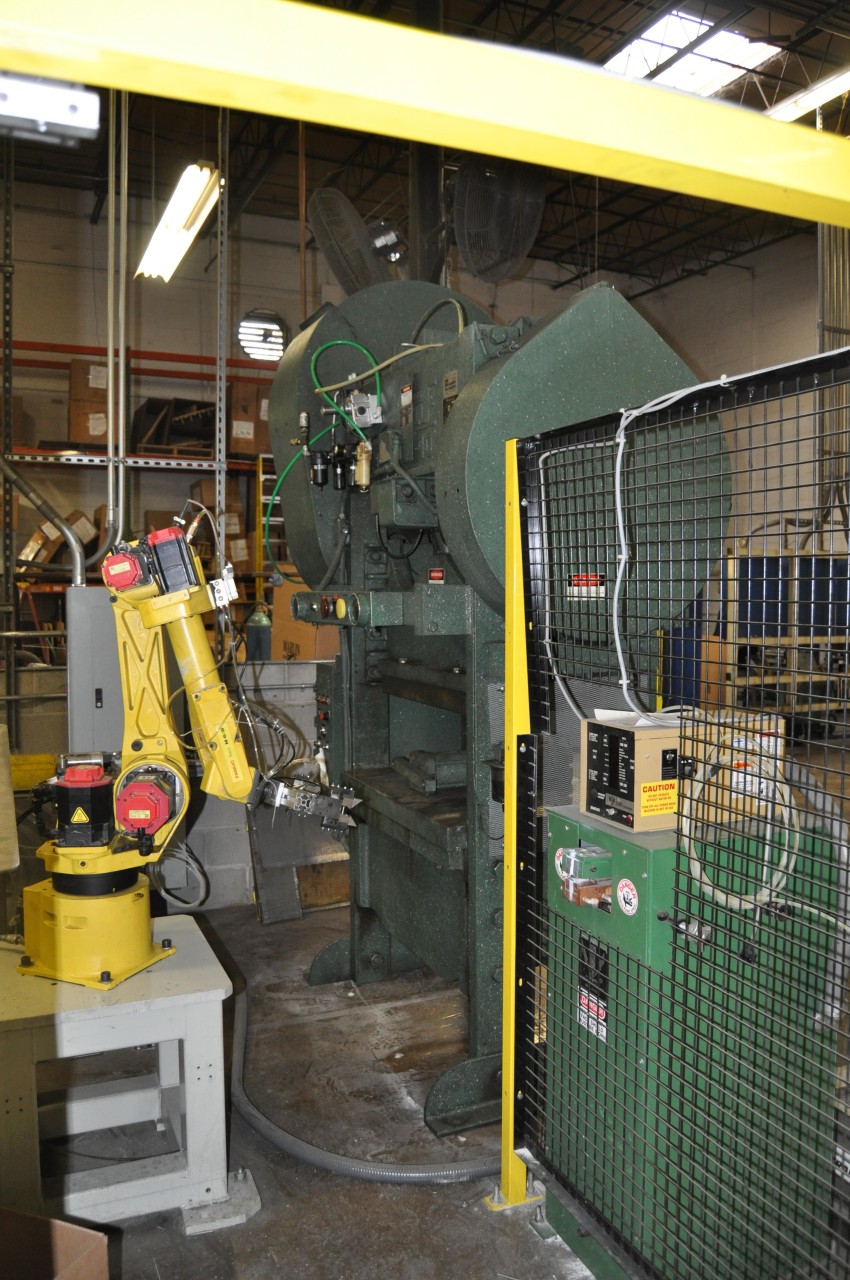 Last year, we added a few tons of new automated manufacturing equipment to the Marlin Steel factory floor. From a highly unique (only five in the world) medium frequency direct current welder from Ideal Welding Systems, to a Bütfering deburring machine, to a new Rouselle 8SS40 Double Crank Straight Side Press, the team at the Marlin Steel factory have even more options for making sure that your custom wire basket and sheet metal forms can meet your exacting needs.
Last year, we added a few tons of new automated manufacturing equipment to the Marlin Steel factory floor. From a highly unique (only five in the world) medium frequency direct current welder from Ideal Welding Systems, to a Bütfering deburring machine, to a new Rouselle 8SS40 Double Crank Straight Side Press, the team at the Marlin Steel factory have even more options for making sure that your custom wire basket and sheet metal forms can meet your exacting needs.
Using these machines helps improve not only the speed at which custom metal fabrications can be made, but to improve their overall quality as well. Today, we wanted to talk about the Rouselle 8SS40, specifically how it allows us to pierce, stamp, coin, and trim wire forms without the need for secondary operations such as deburring.
Eliminating Secondary Operations for Pierced, Stamped, Coined, and Trimmed Wire Forms
When trying to reshape steel manually, you usually need a lot of heat and time to work. Even with a master craftsman doing the manual work, there are almost always extra operations needed after the fact to remove burrs, or ensure that the trim is the right size, and so on.
There are many factors that contribute to this, such as the need to superheat the metal before manual reshaping and human error. The reason heated metal is an issue is that until the metal is cooled, it remains somewhat malleable, so it becomes deformed after the fact more easily.
The Rouselle 8SS40 removes the guesswork from the equation when it comes to piercing, stamping, coining, trimming, and swaging wire forms. With a force of 80 tons at the bottom of stroke, this heavy-duty machine easily compresses many different stainless steel alloys “cold.” This means that once the machine is done stamping, swaging, coining, etc., the finished piece is solid and not as susceptible to other forces the way that a hot piece of metal would be.
In addition to compressing metal without the need for excessive heat, the Rouselle 8SS40 makes such compressions with incredible accuracy and regularity. Each and every stamping, coining, and trimming procedure is made with exacting precision so that there is much less loose material stuck to the finished wire form afterwards. This helps to eliminate the need for deburring operations which would otherwise be necessary to ensure a smooth edge.
Benefits of Eliminating Secondary Operations
Why is the elimination of secondary operations such a big deal? Here’s a hypothetical situation to help show the impact of using a machine that eliminates secondary operations:
Say that a factory can perform 3,000 swaging, piercing, or flattening operations in an hour. In one eight-hour shift, that would be 24,000 such operations. However, this factory’s method of performing these tasks leaves 50% or more of the wire forms in need of secondary deburring operations which take 15 seconds per wire form processed. 15 seconds doesn’t sound like a lot of time, right? Well, 15 seconds multiplied by 12,000 units equals 180,000 seconds, which is 50 hours of labor. In short, this factory has to dedicate at least one full-time worker each week to the task of deburring their wire forms.
By eliminating the need for these secondary operations, this factory could free up that worker (or team) to perform other tasks. Even better, the 50 hours of labor saved on deburring is two days saved on production time, allowing for the wire forms to be shipped to the customer faster, and reducing the time to start work on the next customer’s order.
Learn more about how Marlin Steel uses advanced factory automation to bring customers their custom metal parts orders faster and with better quality today.



.gif)


